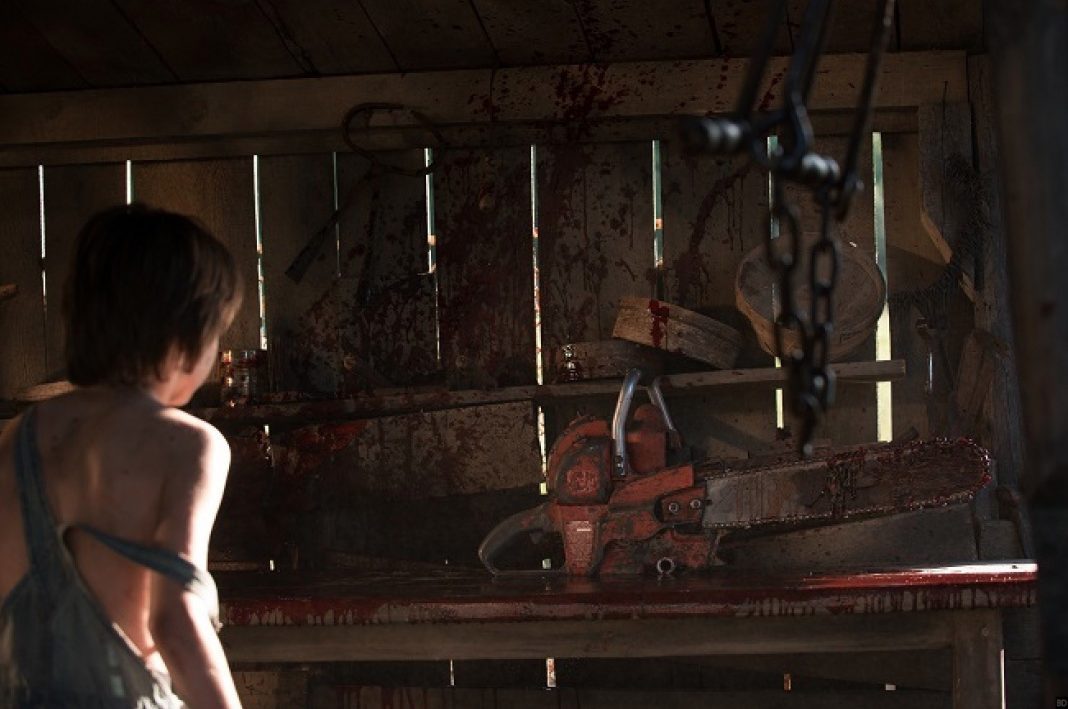Every classic slasher franchise has “that one” film no one wants to talk about. That one film horror fans pretend was never made. That one film that left a stain on the canon rather than a loving touch. Sadly, Leatherface, the latest installment to the Texas Chainsaw Massacre franchise, is “that one” film. By far the most disappointing, story issues in abundance and flat characters weigh down what is otherwise a decent gore fest. While the film rewrites much of the already established origin story from the 2006 remake, it doesn’t bring anything new to the table besides continuing the tradition of breaking continuity among the franchise.
The entire film can be summarized in one sentence with every major plot point laid out. There are no twists, no genuine surprises. The film is a simplistic, straight-forward origin story that fails to add anything to the existing franchise nor add anything new to the horror genre. The only thing Leatherface has going for it is the gore; the shots, beat downs and other kills, standard or creative, do not disappoint, as well as some seriously cool set designs. The gore may be a bit sparse for a slasher, but when it is delivered it’s delivered with a vengeance.
The directors’ (Alexandre Bustillo, Julien Maury) cited Rob Zombie inspiration, a la The Devil’s Rejects, shines through; visually, Leatherface sticks to the gritty, grimy, and sordid affair that the source material commands. Fans of Bustillo and Maury will no doubt enjoy the extreme imagery, but fans of the franchise looking for a compelling origin story or a deeper tie into the series as a whole will be extremely disappointed.
The film’s focus is split three ways between the psychopathic and sadistic Sawyer family, the revenge-driven Texas Ranger Hal Hartman, and a rag-tag band of insane asylum escapees and a kidnapped nurse. While the film does weave these separate stories together, albeit haphazardly, it’s a shallow attempt to explain how and why Leatherface became the masked psychopath he was prior to the events of the original film without much of a connection to the source material.
Leatherface tries to diverge from the “teens visit the farm and get killed” trope by making the teens into killers, but they did it against the backdrop of an insane asylum, which is a notoriously overused plot device in horror movies. There is an air of accuracy to it however, as Ed Gein, whom the original film derived a bit of inspiration, was sentenced to live out the remainder of his life in an insane asylum—but the film didn’t provide a fresh take on portraying institutionalized individuals. The film also tries to add an element of mystery by delaying the reveal of which insane asylum escapee is the one to put on the leather mask, but it’s obvious from the moment you set foot into the asylum who is the missing Sawyer family member.
However, despite the major faults of Leatherface, the dialogue is decent and is made better the actors’ carefully timed deliveries. There wasn’t a moment that felt forced or awkward; everything flowed surprisingly naturally, which help to ease the pain of the slow-paced, lackluster story and plot. Lili Taylor is the standout star as Verna Sawyer, the menacing family matriarch, followed by the rest of the cast in equal measure.
It’s something remarkable about this film, considering the characters themselves are completely two-dimensional and uninteresting, or too outlandish to be taken seriously; love-bird, mental asylum wards Tammy and Ike are Mickey and Malory knockoffs who have little to no boundaries, as evident by their necrophelic, threesome romp—which was one of several moments in the film that was shocking for the sake of being shocking. The rest of the main characters spend the film focused on their primary motivations, which leaves plot hole after plot hole with each scene dedicated to exploring those motivations.
What used to be considered revolutionary horror filmmaking for its scare tactics and violence, audiences have become accustomed to. They’re not necessarily desensitized by how much gore is on the screen, but horror audiences are smarter now—you can’t throw buckets of blood over an actor and chop their leg off and call it a day. Leatherface is just that: an attempt to copy everything that has come before it without an understanding of what makes those films great.







